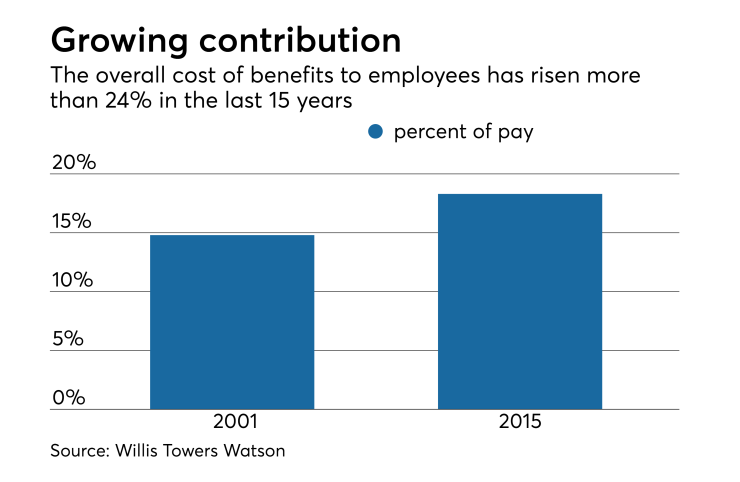The year in employer-sponsored healthcare centered on attempts to manage continued rising insurance and medical costs — a trend that is not going away, experts say.
Employers were willing to try new strategies to stem expenses, explains Bob Madden, employee benefits consultant at brokerage Lawley Benefits in Buffalo, N.Y. For example, in 2017, more Lawley clients than in the previous two years combined decided to self-fund their health plans — the most in one year since the Affordable Care Act passed.
The growth of group captives, where participating employers maintain their own self-funded plans with group stop-loss insurance to stem the risk, Madden explains, allowed smaller groups to self-fund.

While interest in self-insured group captive insurance was growing, especially among middle-market employers, widespread confusion
EBA’s
His firm has a dozen employees who serve 256 employer groups with 16,530 covered lives. Rodgers created four healthcare purchasing coalitions with more than 11,000 individual members from 64 middle-market employers in 35 states whose head counts range from 100 to 500 employees. At $7,065 PEPY in 2016, the health benefits of coalition members cost 41% less than the national average of $11,990 PEPY as estimated by the Henry J. Kaiser Family Foundation. The cost includes both employer and employee contributions for medical and other health coverage for all covered lives.
Reform efforts
Another major topic in 2017 was healthcare reform and the “never-ending” conversation around whether or not it would happen, says Nicole Wruck, health practice leader at consultancy Alight Solutions in Lincolnshire, Ill.
GOP legislation failed to pass the Senate and the industry is still looking for relief from Affordable Care Act reporting requirements. “When I think of employers that we speak to on a day-to-day basis, there are some heavy burdens [they are] dealing with as it relates to reporting requirements tied to the employer mandate,” Wruck says.
The tax reform bill signed by President Donald Trump includes a repeal of the individual mandate, leaving employers concerned about potential adverse selection if healthy employees decide to not purchase coverage.
The repeal of the individual mandate has many
In October,
During 2017, employer groups





